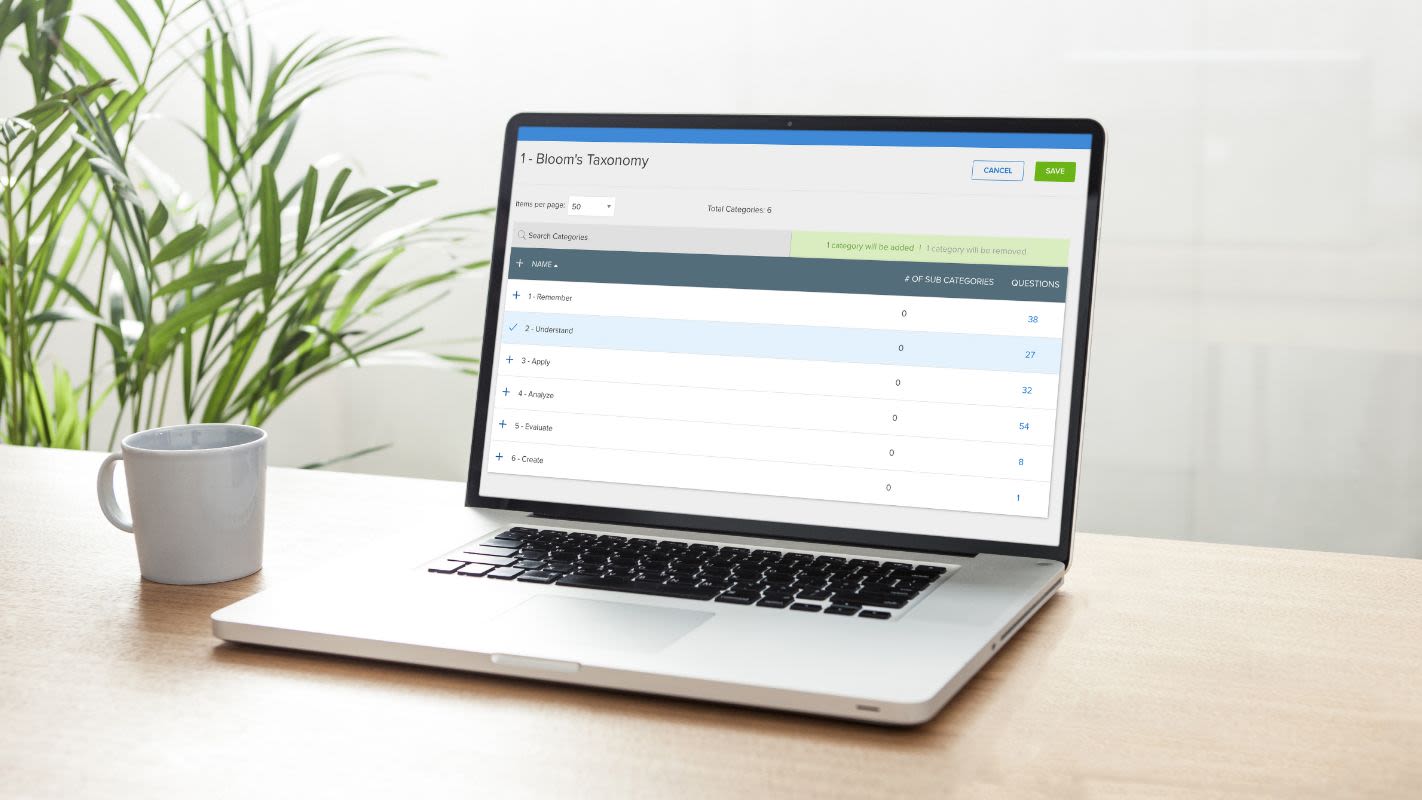Software plays a critical role in boosting student success and performance
How ExamSoft’s platform transformed Sullivan University’s student assessment program, helped improve course delivery, prepared students for licensing exams and even supported the accreditation process.

In 2014, the College of Pharmacy and Health Sciences at Sullivan University was at a crossroads. In addition to managing a growing accelerated Doctor of Pharmacy (PharmD) program, the school had also welcomed its inaugural class into the Master of Science in Physician Assistant Studies (MSPA) program.
Because these were relatively new programs, Dr. Sarah Raake, Associate Professor and Director of Institutional Effectiveness at Sullivan, and her colleagues wanted to gain a better understanding of how students were performing and which types of courses and classroom formats were most effective at teaching students the concepts they needed to pass both their university and licensure exams. They looked to ExamSoft, part of the Turnitin family, to meet their needs.

Doing Meaningful Assessment
The College of Pharmacy and Health Sciences chose ExamSoft for three reasons: its software would help faculty boost exam efficiency, provide them with more comprehensive exam data, and allow students to take their exams even without internet connectivity if needed. What they also gained was even more than they anticipated.
“Before ExamSoft, there wasn’t the same intentionality behind building an assessment,” says Dr. Raake. Faculty were administering paper-based assessments, which made it difficult to keep track of performance trends. And with nearly 100 students across courses, it had become time-consuming for instructors to print, distribute, and score exams, or even to begin exploring trends in student performance. Faculty didn’t have time to collate and use student performance data meaningfully. “ExamSoft changed all that,” says Dr. Raake. “It helped us be more thoughtful and planned, and we are now using assessment effectively to advance teaching, learning, and student success in our programs.”
“Our goal at ExamSoft continues to be to streamline assessment processes for higher efficiency and efficacy. We want our solutions to create time–or rather–give back time to faculty for the actual teaching and learning endeavor,” says Dr. Divya Bheda, Director of Education and Assessment at ExamSoft. Dr. Bheda trains ExamSoft clients on educational and student success best practices via EAS+Y (ExamSoft Assessment Solutions + You) consulting.
Using ExamSoft, faculty can build questions and exams in its portal; students download secure tests onto their own hardware. After entering a password, the software locks down their devices, and students can take their exams securely, even while offline. Once completed, students upload their answers for faculty and administrators, who grade the exams. The performance reports derived from this grading offer critical insights to decision-makers at all levels of the program–especially to faculty–on the various ways they can catalyze learning and student success. This was the case at Sullivan.
Category tagging supports critical goals
One of the biggest strengths that drew Sullivan to ExamSoft is its unique category-tagging feature that allows faculty and administrators to code individual exam items to specific content areas such as accreditation standards, learning outcomes, and program objectives. Tagging typically happens during assessment planning, but it can also be done after the exam is complete and/or scored.
Faculty and administrators can customize the tagging categories to suit a variety of academic subjects and assessment types. They can also create multiple subcategories within a single, parent category.
“Tagging down to the exam item level and the resulting reports that lay out student performance by these categories help faculty discern patterns in student learning and achievement,” says Dr. Bheda. “They offer insights into whether the curriculum or the teaching methodologies need to be changed, if the program curricula needs to be better scaffolded, if an assessment item needs to be reconsidered, or if student remediation is needed along particular categories. All of this is possible because of this category-tagging ability of the platform. Data becomes meaningful and useful for faculty, and they are now empowered to make data-guided decisions for student success.” Categories and tagging underlie the success of Sullivan’s use of ExamSoft.
Tagging: Analytics for student success
Category tagging helps institutions like Sullivan foster student success by identifying areas where students excel and sharing these insights with them, so that students can make more informed decisions about areas of future study and set career goals. Category-based reports also show students areas where they need to improve to help guide more effective study habits and support retention.
The College of Pharmacy and Health Sciences has been working with ExamSoft for 8 years, and Dr. Raake and her colleagues are making full use of the category tagging technology to help students before and after their high-stakes exams. Dr. Raake, for example, analyzes exam data and meets with students who need extra support. After printing out the results of the students’ Strengths and Opportunities (S&O) Reports, she sits with them, pointing out areas where they need to spend extra time in preparation for their next exams.
“I have heard time and again how clients use our reports to help advance student success by engaging in that review process to offer quality education to their students,” says Dr. Bheda.
Tagging: Analytics for curricular excellence
As Dr. Bheda mentions, Sullivan benefits from educators being able to analyze trends across exam-takers, so that they can identify what aspects of individual courses are most effective and which ones require improvement. Tagging helps faculty and administrators examine and improve curricular design by identifying and eliminating content gaps within instruction and assessment. “Category tagging opens up a lot of powerful conversations with faculty about the connection between assessment and course objectives,” says Ben Stephens, M.Ed., Instructional Support Specialist at Sullivan.
The practice of category tagging can also show progress on teaching and assessing goals over the course of a semester and across the entire program curriculum. In addition, it can demonstrate the efficacy of the topics covered in class and through assignments because these same topics are tagged to assessment items.
Tags can highlight which specific instructional methods work best and even indicate how much time instructors should spend on individual topics to successfully reinforce them. “ExamSoft allows the triangulation of data,” Dr. Raake says. “I taught it, I assessed it and I can prove that I taught and assessed it throughout the academic cycle and whether it worked or not.”
Tagging: Analytics for exam quality and rigor
Dr. Raake shares that Sullivan often uses ExamSoft’s built-in psychometric reporting to analyze the efficacy of individual exam questions or entire assessments. Faculty paste psychometric results from ExamSoft into a workbook developed by the university’s Office of Academic Affairs and Assessment to determine what–if any–adjustments are necessary to make assessment more valid and more aligned with course goals. For example, if a large number of students missed a very difficult question, the workbook may suggest making it a bonus item. This process also helps faculty think about how that material is being taught and if these teaching methods are effectively supporting student outcomes.

A boost to licensing preparation
All of these benefits of using ExamSoft have helped the College of Pharmacy and Health Sciences at Sullivan in preparing students for their licensure exams. In addition to highlighting topic areas that may require additional focus, the school uses the ExamSoft platform to mimic the format of the high-stakes, computer-based exams that graduates from their program are required to take to become licensed and certified for professional practice.
For example, neither the North American Pharmacist Licensure Examination (NAPLEX) nor the Physician Assistant National Certifying Examination (PANCE) allows students to return to previous questions to adjust their answers. Universities like Sullivan can disable backward navigation within their own exams while using ExamSoft to help students become more familiar with this testing style.
Similarly, administrators may also adjust the way they present questions to mimic the format of questions that appear on these high-stakes exams. Dr. Raake and her team are incorporating more so-called “hotspot” questions into their exams. For these types of prompts, students must select one or multiple areas of an image in response to a question, going beyond the traditional multiple-choice format to utilize something more commonly experienced in these specific high-stakes tests.
Streamlining the accreditation process
For universities and programs undergoing initial accreditation, reaffirmation, or program review, program analytics from providers like ExamSoft are especially helpful. Instead of digging through paper files or relying on spreadsheets or anecdotal evidence to demonstrate compliance, universities can utilize various data reports, longitudinal performance trends, and curricular adjustments to highlight continuous improvement in individual courses and throughout their programs. “We’re due for an accreditation site visit in 2024, and I think the process will be improved by leaps and bounds with ExamSoft’s category reporting,” Dr. Raake says.

“Data is the key to everything," affirms Dr Bheda. “Having consolidated student performance data available over time allows faculty, administrators, programs, and institutions to engage in that continuous improvement cycle for educational efficacy as required by their program as well as the institutional and accreditation bodies. It helps them meet their own goals of offering quality education to their communities and students. Enabling such efforts for our clients is why we do what we do as a company. It is in line with our mission, ‘Delivering superior assessment solutions to increase learning performance for every student, teacher, and institution,’ and our vision, ‘Harnessing the power of data to transform learning for everyone, everywhere.’”
ExamSoft’s data driven assessment platform can help you educate with intention. Learn more.
This custom content is sponsored by ExamSoft and developed by Inside Higher Ed's sponsored content team. The editorial staff of Inside Higher Ed had no role in its creation.


